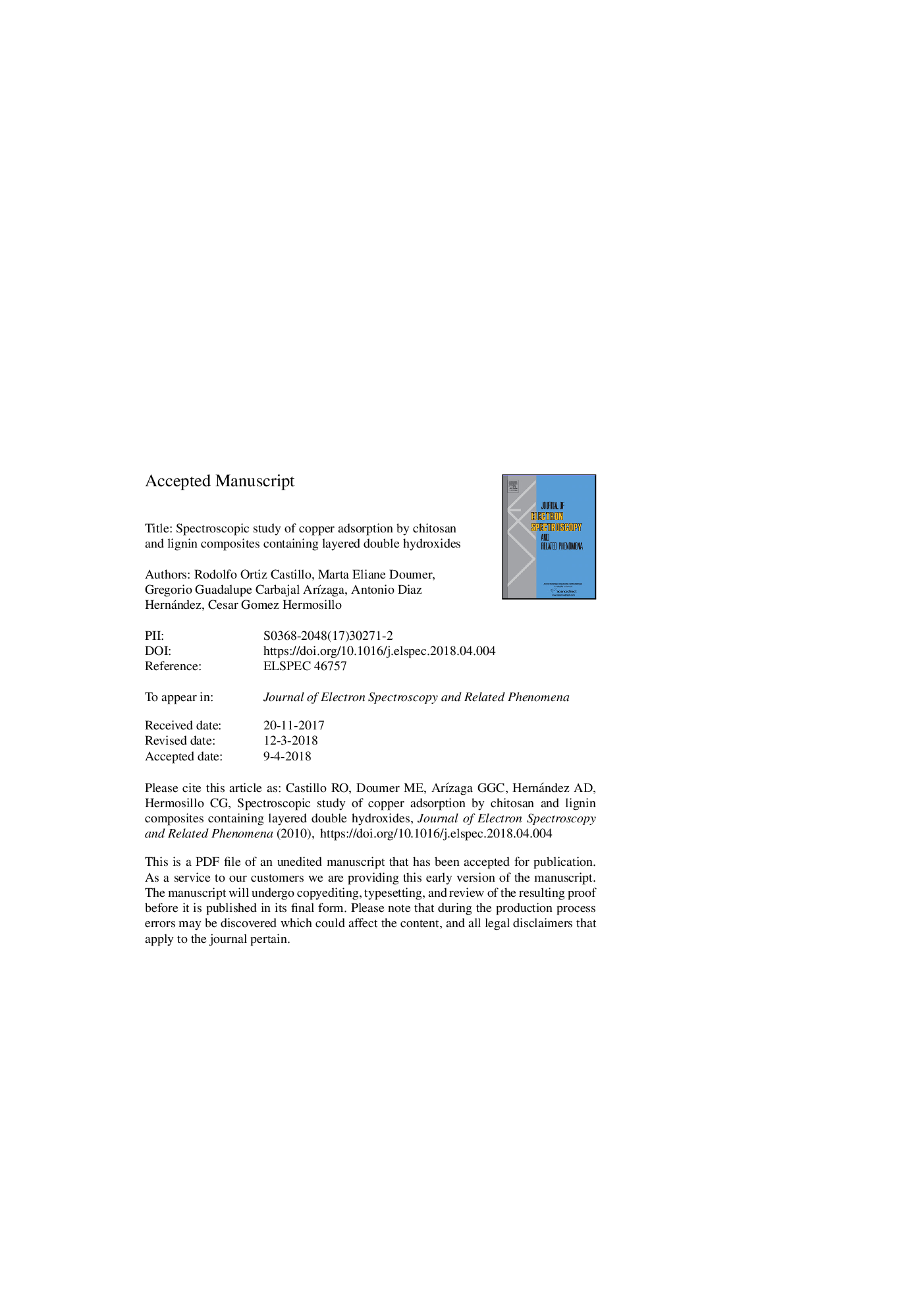| Article ID | Journal | Published Year | Pages | File Type |
|---|---|---|---|---|
| 7839301 | Journal of Electron Spectroscopy and Related Phenomena | 2018 | 25 Pages |
Abstract
The goal of this work was to examine the relationship between these three sorbents and Cu(II) cations removed from water based on data obtained from infrared, electron paramagnetic resonance and X-ray photoelectron spectroscopies. Copper was selected as a model since this heavy metal concerns environmental chemists. Composite materials prepared by combinations of lignin with LDH and chitosan with LDH were also studied. Results indicate that LDH retains Cu(II) by coordinating with hydroxyl groups forming Cu(II) complexes with axial symmetry; lignin retains Cu(II) through hydroxyl and hydroxyphenol groups; when lignin is mixed with LDH to prepare the composite, concentrated domains of copper are formed. In chitosan, C-O is the main coordinating group (94%), forming spread coordination centers for Cu(II) with rhombic symmetry; the chitosan LDH composite enriches the type of ligands retaining copper, probably a reduction of amino groups that were consumed to interact with LDH particles. Cu(II) cations in this composite form square planar or tetragonal distorted octahedral coordination sites.
Keywords
Related Topics
Physical Sciences and Engineering
Chemistry
Physical and Theoretical Chemistry
Authors
Rodolfo Ortiz Castillo, Marta Eliane Doumer, Gregorio Guadalupe Carbajal ArÃzaga, Antonio Diaz Hernández, Cesar Gomez Hermosillo,
